
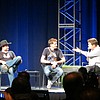
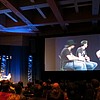
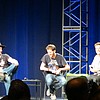
David Collins moderated a discussion about the technology behind the animation on
Star Wars: The Clone Wars just a few hours ago on the Digital Stage at Celebration VI. Joining Collins on stage were supervising director Dave Filoni and visual effects supervisor Joel Aron.
Collins began by asking Aron how the animation team stepped things up from Season 3 to Season 4. Aron talked about making the fourth season a feature film-like animation experience. To give impressed fans a sense of the developments that were still to come, he reminded the audience that their work on Season 4 had been completed over a year ago. "You can imagine how S5 is gonna look," he added.
Given that the animation has progressed so far since the series' inception, Collins asked Filoni and Aron how their team tackled specific challenges that popped up during the production of the most recent season. Filoni said that his team had grown to master many types of animation sequences that would have given them trouble early on (he frequently cites water as an example of this). "A Wookiee on fire leaping from a tree into water, that would be hard," Dave joked, quickly adding, "not that we're doing that."
Filoni also discussed his work with Aron on the look of Mother Talzin. While he was still writing Talzin's dialog, he told Aron that he needed her cloth to be fluid in its motion, just to get a better grasp on her character. Later, the animators found out that they needed to scale back on the motion and quantity of her cloth, but Filoni said that preparing Aron for the look of her clothing had helped them get ready for the animation stage anyway.
"At any given time, Joel and I are probably working on ... 30 some episodes," Filoni explained. Because of this overlapping workflow, Aron and his team can spend months working on a few extremely complicated shots. For examples, 96 frames of a gunship flying through the air took Aron four and a half months to complete because he was struggling with how to get it right. He ended up throwing out what he had with two weeks left and starting over from there. That, he said, was how the show works in general.
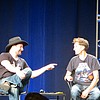
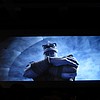
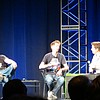
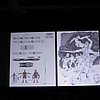
Filoni and Aron also discussed the evolution of visual effects in movies and television. On
The Clone Wars, he said, they try to use old-school special effects, to be "deceivers like Merlin," as opposed to embracing a heavy amount of new-school CGI. They explained that they like to "fool" viewers with split-second animation tricks that suggest the intended visual effect rather than beating viewers over the head with it.
According to Filoni, even the most minor details often provoke extended discussion and debate at Lucasfilm Animation. He once fought a protracted uphill battle to get a group of tents to move in sync with the movements of the characters inside them during the Death Watch episode "Friends and Enemies." "You probably didn't even notice it," Filoni said, "but you felt it." As Filoni noted, a lot of the ambience in
TCW episodes doesn't have to be obvious; it just has to produce an authentic enough visual experience that nothing stands out as jarring.
The conversation then shifted to the Umbaran story arc of Season 4, which featured a strange new alien planet and a strange new Jedi General. Filoni said he didn't want any of the Umbaran technology to look familiar. He asked for the hologram of Obi-Wan Kenobi to appear as millions of little cubes instead of the traditional blue projection field. Aron explained how he tested out that animation process and then Collins showed the audience a clip of the finished sequence.
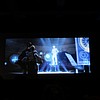
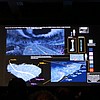
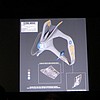
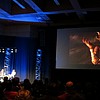
Aron also talked about how his team used lighting tricks to produce animation effects during complex scenes like the Umbaran battles. To simulate roving tanks, they animated the movement of light, thereby suggesting the presence of large vehicles moving through that light. Aron also explained that shapes and lighting combined could be very expressive, using a clip of the giant Umbaran worm creature attacking the clones as an example. "Umbara was a big lesson," Aron said. "We learned how to put more characters in frame [and] interact better with an environment."
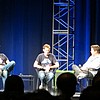
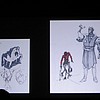
Of course the conversation couldn't go on for too long without centering on the biggest reveal of Season 4: the return of Darth Maul. For that story development, "we needed to go full-throttle," Aron said. "His model is stunning." He thanked Filoni for trusting the animators with his and George Lucas' vision for the resurrected Maul. As an example of the progression in character animation over the years, Filoni noted that Maul's cheeks visible puff out and move in a way that wasn't present anywhere in the
TCW movie.
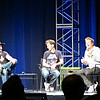
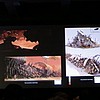
Filoni also addressed Maul's transformation at the hands of Mother Talzin. He thought that they made it more plausible by presenting it as a Mother-Talzin-magic-ritual kind of experience rather than a simple "nope, he recovered in secret!" twist. While showing concept art from the Maul junkyard planet, Filoni discussed the original model for spider-Maul with his junk shell. That model ended up being too complex, so they had to scale it down. Lucasfilm animator Keith Kellogg came up with the idea of having small pieces of junk shake and quiver to give the shots a frenetic, maddening pace. As Filoni explained, when a viewer sees that kind of shaking and quiver, they identify it with excitement and tension and react accordingly.


The original version of the scene where Mother Talzin reinvigorated Maul didn't have her pulling in droid parts from the wasteland, according to Filoni. It was George Lucas himself who suggested that she do that. Filoni said that Lucas wanted to add an element of science and technology to the spirituality. Collins connected that approach to the way that Darth Vader was resurrected.

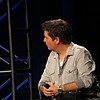
Filoni then addressed the subject of the Sith's focus on survival at all costs. Evil beings, he said, hold on to the present so tightly and don't conceive of their existence ending. Like Maul, Sidious' need for eternal life was wrapped up in his physical form, as opposed to Qui-Gon, who accepted becoming one with the Force. Vader couldn't see that Obi-Wan's selfless sacrifice represented a form of power.

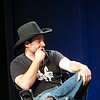
Aron said that he paints almost every shot to get a sense of how it should look once animated. He wants the effects to be tied into something graphic, something real, as opposed to just a simulation. "You'll get a much more organic feel to it" that way, he said.
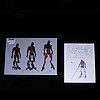
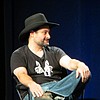
At the end of the panel, the audience was treated to a Season 5 clip of Embo chasing Anakin and Padme through a snowy landscape (this clip has already been shown at Star Wars Weekends 2012 and on StarWars.com). After the clip, Filoni joked that the animators who worked on that scene, being from California and Singapore, "had never actually seen snow."
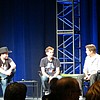
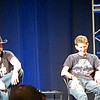
During the Q&A, Filoni received the now-obligatory Kitster and Ben Quadinaros questions. In response, he improvized explanations for why they haven't yet appeared on the show. Kitster, he said, has a tough shift in a Tatooine market and is impossible to get into a television contract, while Ben Quadinaros lives out his days as a ronto herder who claims to know celebrities but is considered a loser.
The third and final question was:
Question: How do you know what kinds of choices to make to produce the best content?
Answer from Filoni: I never have to push my team to want to do it right. They are already motivated. I can trust them to work as hard as I work. Another important thing is knowing when to go back and review something to make sure it's perfect.
Dave made his animation team redo the cake that Padme serves her friend when he comes to her apartment in an earlier season. His team never let him hear the end of it, "but it looked better."
That's a wrap for our coverage of the "Inside
The Clone Wars Tech" panel at Celebration VI. Stay tuned for more coverage from the convention! We're just getting started!





























